In a previous post we have seen how hydrostatic, an area of physics first developed by Archimedes in the third century CE, underwent a modernisation and development during the Renaissance. Today we are going to look at another area of physics examined by Archimedes, which was also revived, and developed during the Renaissance, statics. To give a modern definition:
Statics is the branch of classical mechanics that is concerned with the analysis of force and torque (also called moment) acting on physical systems that do not experience an acceleration (a=0), but rather, are in static equilibrium with their environment. Wikipedia
In antiquity and the Middle Ages, the concept of force did not exist, so we here find the discipline developed around the concept of weight. Statics is one half of the discipline of mechanics from the ancient Greek μηχανική mēkhanikḗ, lit. “of machines” and in antiquity it is literally the discipline of the so-called simple machines: lever, wheel and axel, pulley, balance, inclined plane, wedge, and screw.
Archimedes (c. 287–c. 212 BCE), whose work on the topic was his On the Equilibrium of Planes (Ancient Greek: Περὶ ἐπιπέδων ἱσορροπιῶν, Romanised: perí epipédōn isorropiôn) was not the first to tackle the subject. His work was preceded by a text known in Latin as the Questiones Mechanicae (Mechanical Problems), which in the Middle Ages was attributed to Aristotle (384–322 BCE) but is now considered to actually be by one of his followers or by some to be based on the earlier work of the Pythagorean Archytas (c.420–350 BCE). There was also a On the Balance attributed, almost certainly falsely to Euclid (fl. 300 BCE), which won’t play a further role here. Later than Archimedes there was the Mechanica of Hero of Alexandria (c. 10–c. 70 CE), unknown in the phase of the Renaissance we shall be reviewing but discussed along with the work of Archimedes in Book VII of the Synagoge or Collection of Pappus (c. 290–c. 350 CE).
The two major texts are the pseudo-Aristotelian Questiones Mechanicae and Archimedes’ On the Equilibrium of Planes, which approach the topic very differently. The Questiones Mechanicae is a philosophical work, which derives everything from a first principle that all machines are reducible to circular motion. It gives an informal proof of the law of the lever without reference to the centre of gravity. The pseudo-Euclidian on the Balance contains a mathematical proof of the law of the lever, again without reference to the centre of gravity.
In Archimedes’ On the Equilibrium of Planes the centre of gravity plays a very prominent role. In the first volume Archimedes presents seven postulates and fifteen propositions to mathematically using the centre of gravity to mathematical demonstrate the law of the lever. The volume closes with demonstrations of the centres of gravity of the parallelogram, the triangle, and the trapezoid. Centres of gravity are a part of statics because they are the point from which, when a figure is suspended it remains in equilibrium, that is unmoving. In volume two of his text Archimedes presents ten propositions relating to the centres of gravity of parabolic sections. This is achieved by substituting rectangles of equal area, a process made possible by his work Quadrature of the Parabola (Greek: Τετραγωνισμὸς παραβολῆς).
Although already translated from Greek into Latin in the thirteenth century by William of Moerbeke (c. 1220 – c. 1286), On the Equilibrium of Planes remained largely unknown in medieval Europe. Thābit ibn Qurra (c.830 –901) had translated it into Arabic and he wrote two related works, his Kitab fi ‘l-qarastun (Book of the Steelyard)–a steelyard is a single are balance– and his Kitab fi sifat alwazn (Book on the Description of Weight) on the equal armed balance.
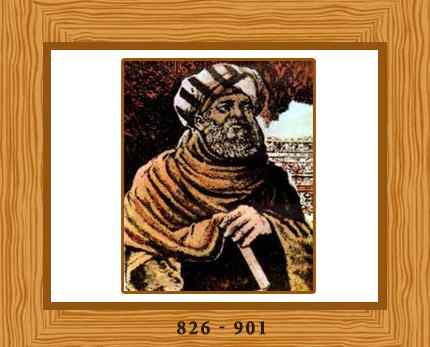
The pseudo-Aristotelian Questiones Mechanicae was well known in the Middle Ages and Jordanus de Nemore (fl. 13th century) developed a scholastic theory of statics in his science of weights (scientia de ponderibus) presented in three texts, the first Elementa super demonstrationem ponderum, which presents the conclusions of Thābit ibn Qurra’s text on the steelyard deriving them from seven axioms and nine propositions. This is the earliest of the three and the only one definitely ascribable to Jordanus. The two later texts are usually attributed to the school of. The second text Liber de ponderibus is a reworking of the Elementa super demonstrationem ponderum. The third De ratione ponderis is a corrected and expanded version of the Elementa. In his work he proves the law of the lever by the principle of work using virtual displacements. Using the same method, the De ratione ponderis also proves the conditions of equilibrium of unequal weights on planes inclined at different angles.
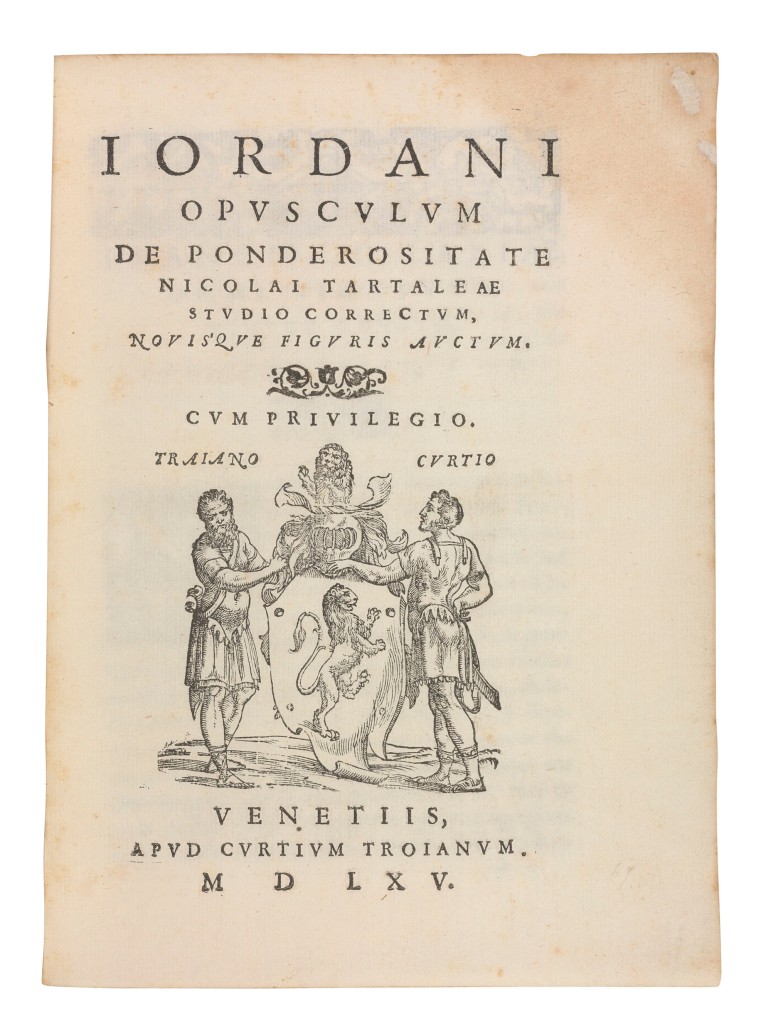
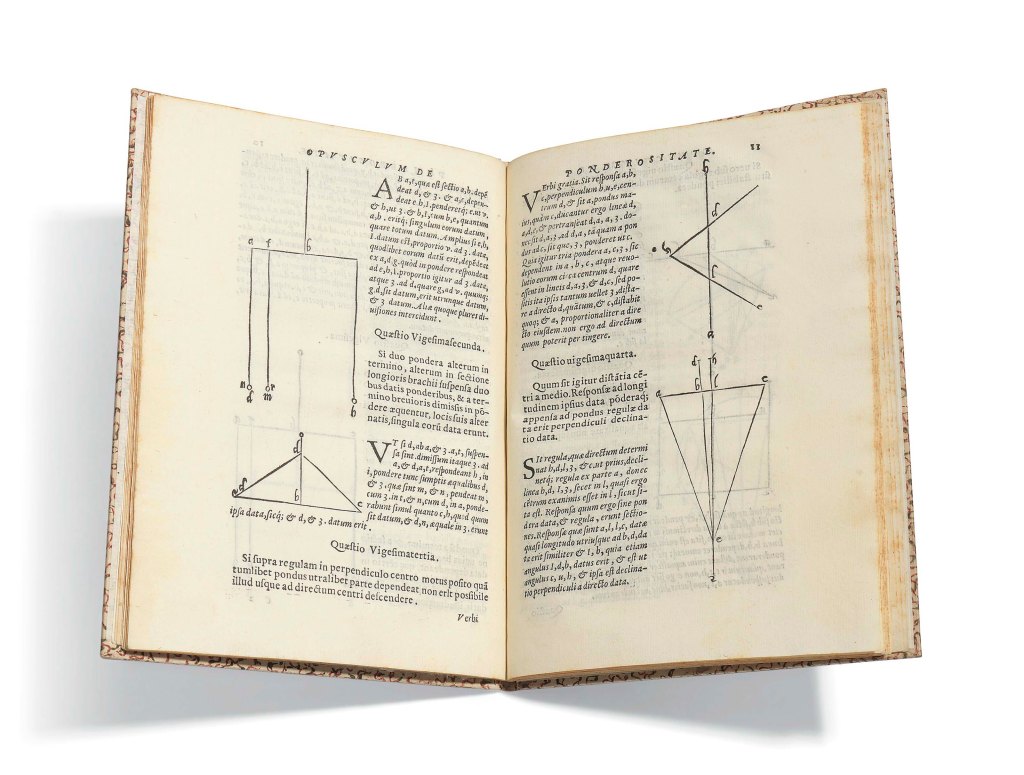
The Questiones Mechanicae went through more than a dozen editions between the end of the fifteenth century and the beginning of the seventeenth. The first Greek edition was in the Aldine edition of the works of Aristotle published in Venice in 1497, which was often reprinted. There were various Latin translations published in Paris, Venice, Rome. The engineers Antonio Guarino and Vannoccio Biringuccio (c. 1480 – c. 1539) both produced Italian translations, published respectively in Moderna 1573, and Rome 1582. The Questiones Mechanicae were also known to the authors of the Renaissance Theatre of Machines books, such as Agostino Ramelli (1531–c. 1610) and there was a strong correlation between the theoretical works on machines such as the Questiones Mechanicae and the works of Jordanus de Nemore and the strong interest in projected new machine designs.
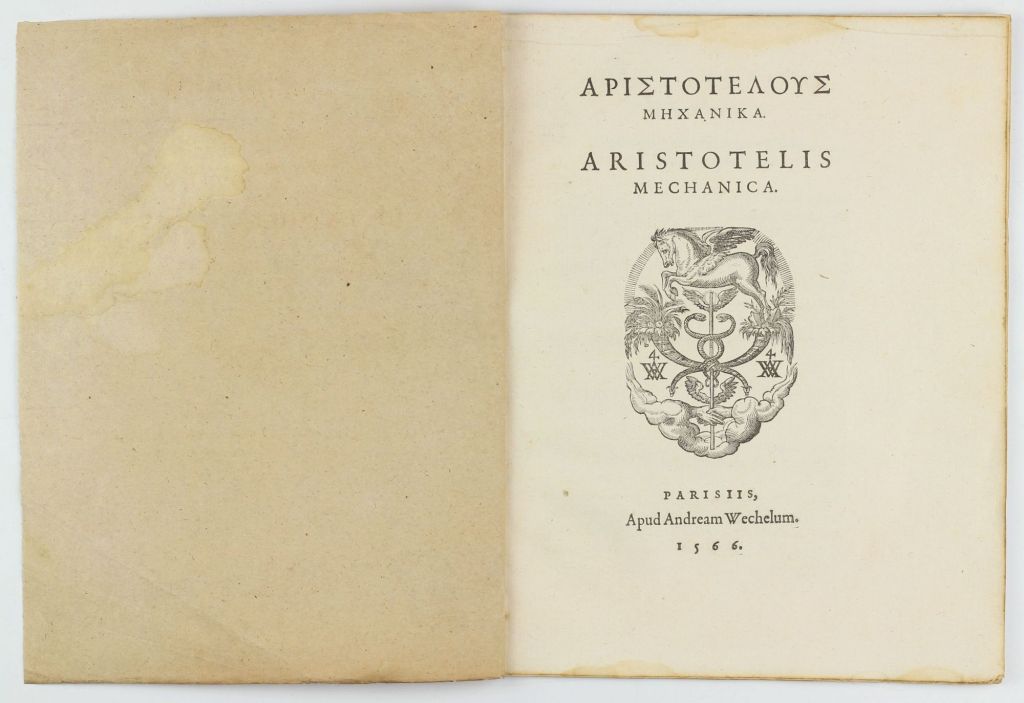
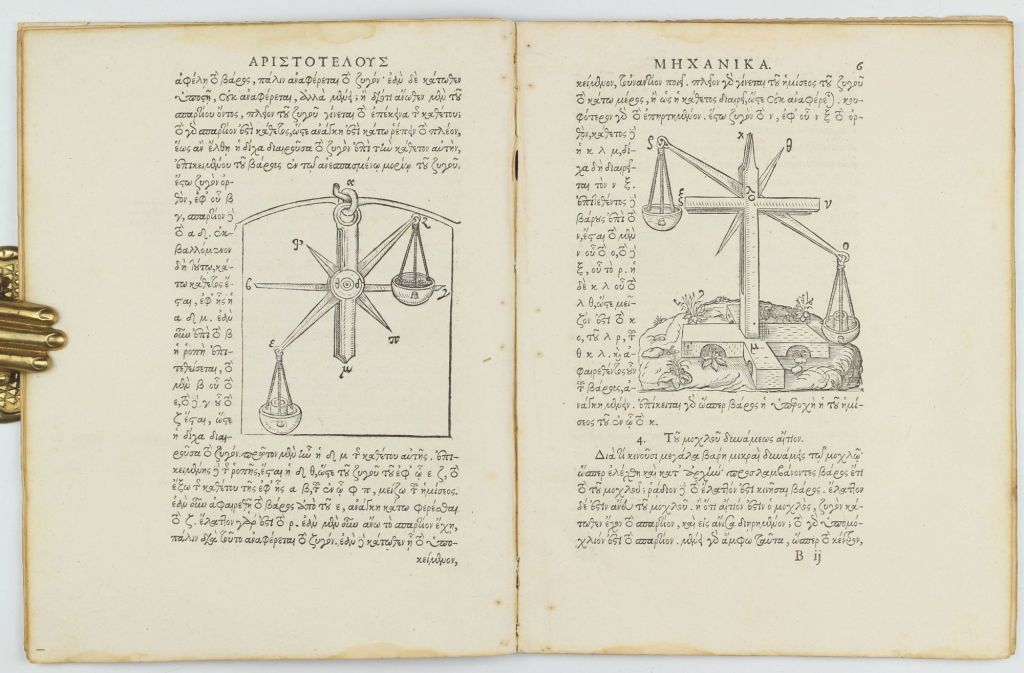
When we turn to the Renaissance mathematici were meet many of the same names as by the Renaissance revival of hydrostatics. In 1546, Niccolò Tartaglia (c.1500 – 1557) published his Quesiti ed invention diverse (Various Questions and Inventions) in Venice, which referenced some of the contents of the Questiones Mechanicae and the works of Jordanus. As did his student Giambattista Benedetti (1530 – 1590) in his Diversarum speculationum mathematicarum et physicarum liber published in Turin in 1585.
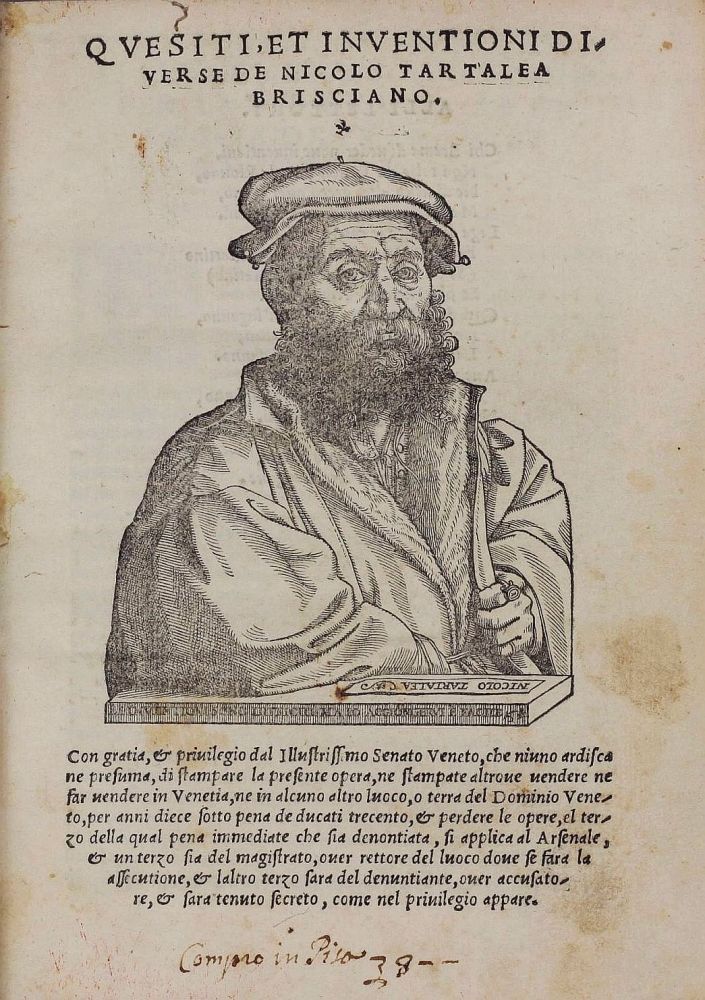
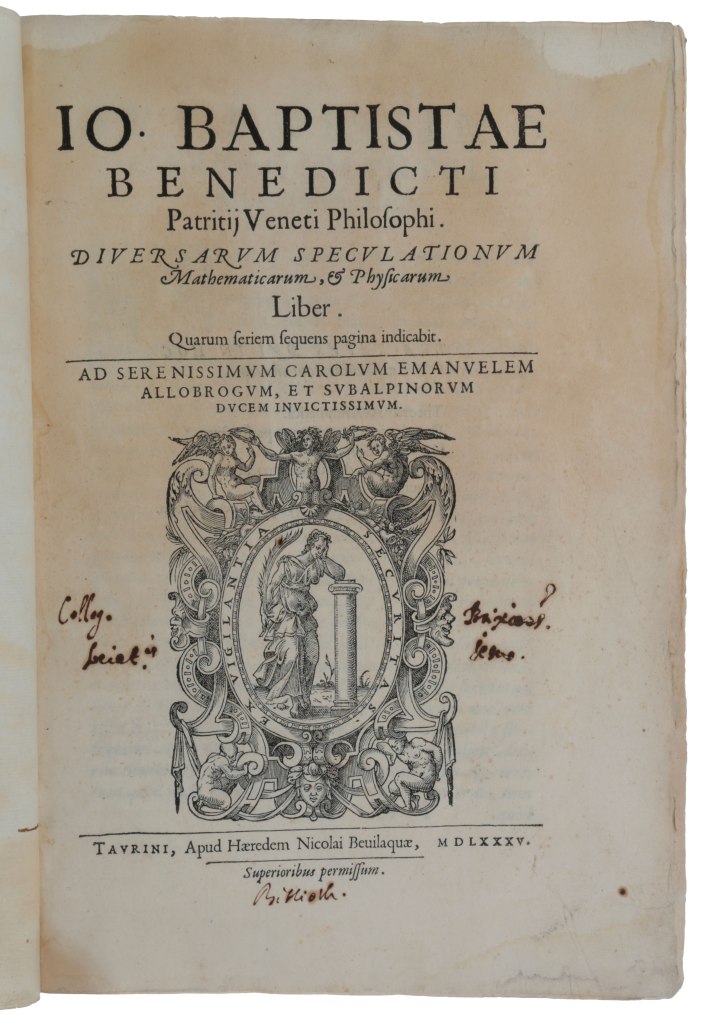
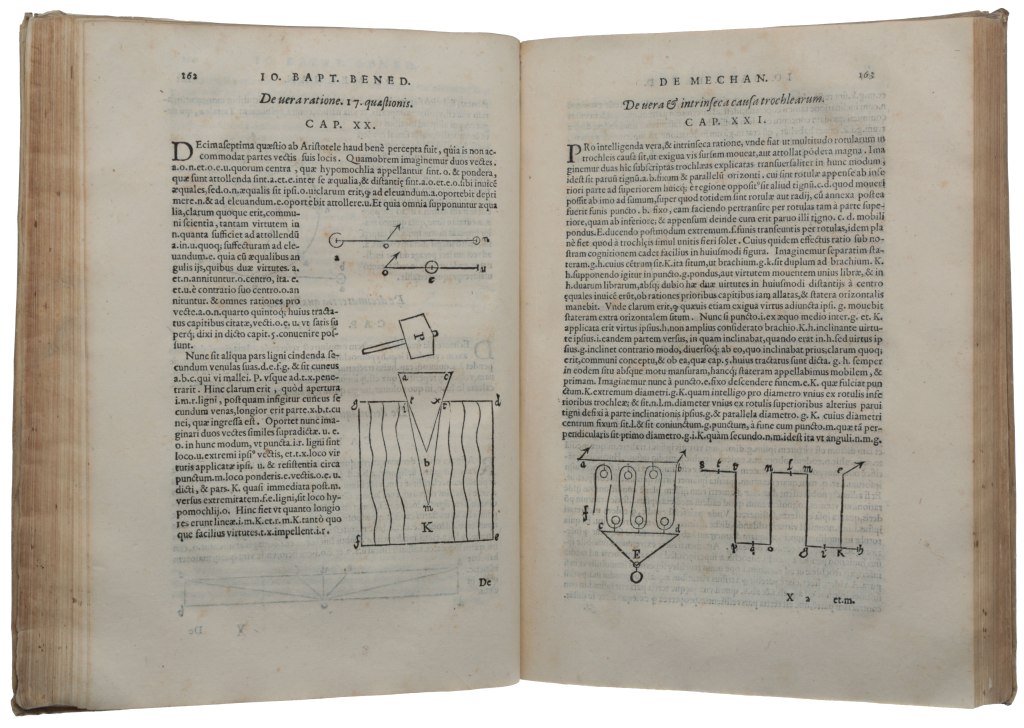
Tartaglia also published Moerbeke’s Latin translations of both books of Archimedes’ On the Equilibrium of Planes together with his Quadrature of the Parabola and Book I of On Floating Bodies in 1543.
However, it was the so-called Urbino School, who truly reintroduced and began to modernise Archimedes’ work on statics. Federico Commandino (1509 – 1575) found the Moerbeke translations of Archimedes defective and produced new Latin translations of them as well as a new Latin translation of Pappus’ Synagoge containing parts of Hero’s Mechanica. Convinced that some of Archimedes’ proofs in On Floating Bodies were not well grounded he wrote and published his own Liber de centro gravitas solidorum (Book on the Centres of Gravity of Solid Bodies) in 1565.
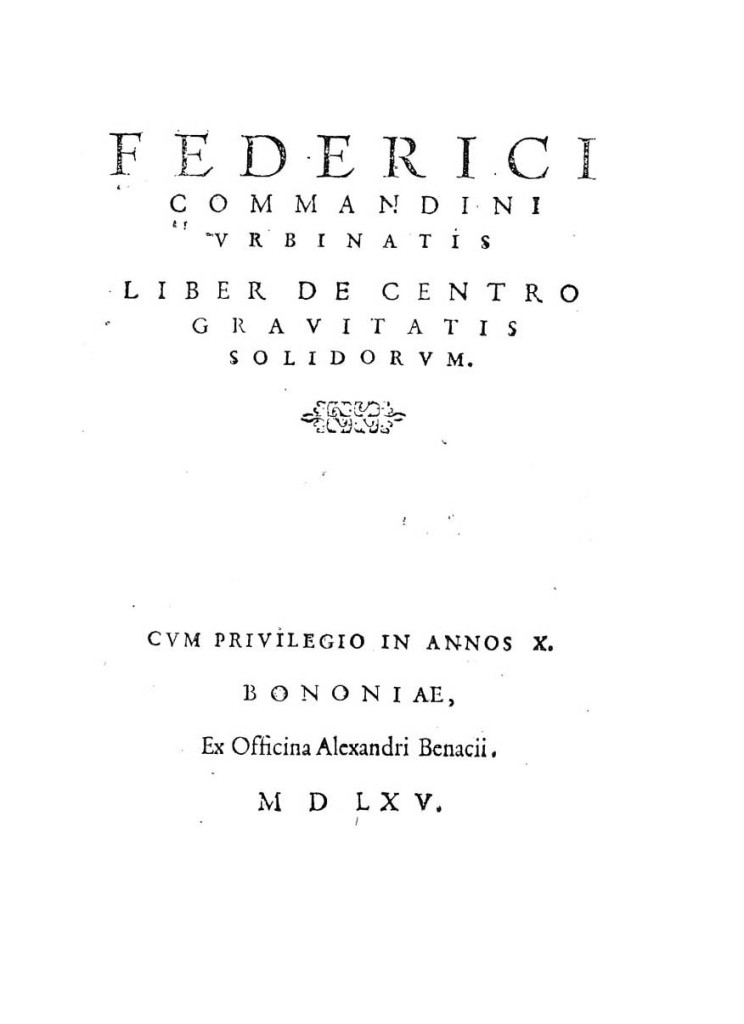
Commandino laid the foundations of the revival in Archimedean mathematical statics in the sixteenth century, but it was his student Guidobaldo dal Monte (1545 – 1607), who using Commandino’s new translations, both published and unpublished, who erected the structure.
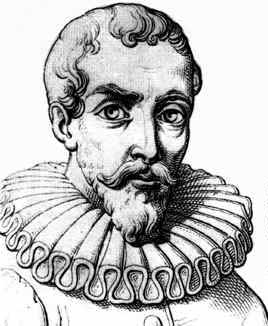
Dal Monte reconstructed the statics of Questiones Mechanicae using an Archimedean mathematical approach with postulates and propositions in his Mechanicorum Liber published in Pesaro in 1577. Under dal Monte’s supervision, the mathematician and explorer, Filippo Pigafetta (1533 – 1604) published an Italian translation Le mechniche in Venice in 1581, indicating the interest in dal Monte’s work. New editions of both were published in 1615 and a German translation appeared in 1629. Dal Monte rejected the earlier concept that all machines could be reduced to circular motion, concentrating in the first instance on the lever and then describing other machines in terms of the lever. He presents detailed analyses of the both the balance and pully systems.
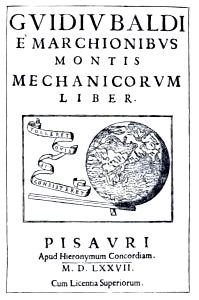
It should be noted that for dal Monte the theoretical discipline of mechanics cannot be separated from the study and construction of real machines, in his Mechanicorum Liber, he wrote:
Mechanics can no longer be called mechanics when it is abstracted and separated from machines.
Although he thought that the theoretical study of mechanics should be kept separate from the actual construction of machines. The primary source for dal Monte’s approach is Pappus’ Synagoge, of which he had access to both a Greek manuscript and the manuscript of Commandino’s Latin translation, which Commandino had been unable to publish before his death. In 1588, dal Monte edited and published that Latin translation, bringing Pappus’s synopses of Hero’s Mechanica and Archimedes’ On the Equilibrium of Planes to public attention for the first time in print. In the same year he published his own In duos Archimedis Aequeponderantium Libros Paraphrasis scholiss illustrata, a paraphrase of On the Equilibrium of Planes, both books were published in Pesaro by Hieronymus Concordia, who had also published the Mechanicorum Liber.
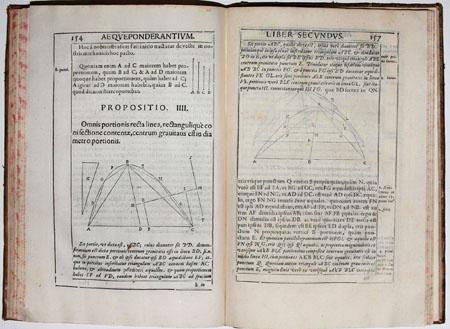
A third member of the Urbino School, dal Monte’s student, the mathematician and historian of mathematics, Bernardino Baldi (1553–1617), referenced and amplified the works of Commandino and dal Monte on statics in his own writings, in particular his In mechanica Aristotelis problemata exercitationes published posthumously in 1621.
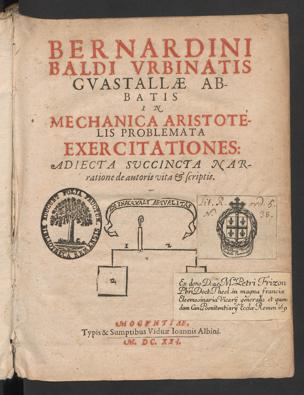
The man, who broke the connection in statics with the Middle Ages was the Netherland’s engineer and mathematician, Simon Stevin (1548–1620). Stevin had read the Questiones Mechanicae and was aware of the medieval work on statics, but we don’t know how, he had read the relevant works of Archimedes, and Commandino’s Liber de centro gravitas solidorum, but does not seem to have read Papus’ Synagoge, and so was not aware of Hero’s Mechanica.
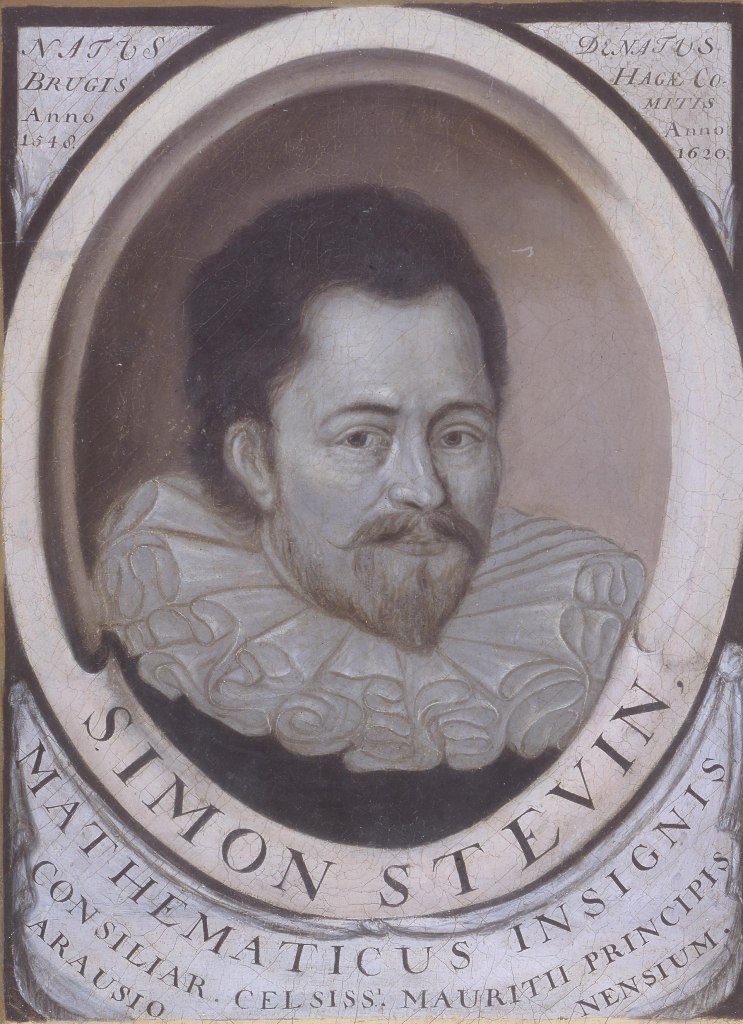
In 1586 he published three books in one volume: De Beghinselen der Weegconst (The Principles of the Art of Weighing), De Weegdaet (The Practice of Weighing), and De Beghinselen des Waterwichts (The Principles of the Weight of Water).
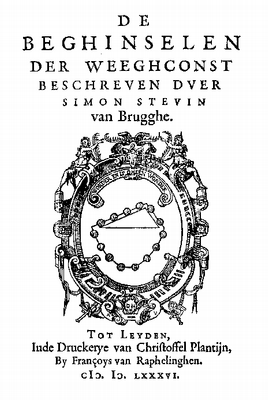
De Beghinselen der Weegconst consists of two books. Book I has two parts of which the first deals with vertical weights with the law of the balance as central result. The second part deals with oblique weights with the law of the inclined plane as central result. Book II is devoted to centres of gravity taking Commandino’s work as its starting point. Stevin rejected both circular motion and virtual displacement, the key arguments of the medieval discussion of weights. Regarding the latter he argued that when discussing equilibrium, it was nonsense to start with a discussion of motion, which is what virtual displacement entailed.
Stevin’s proof of the law of the inclined plane involves his famous Clootcrans, wreath of weights:
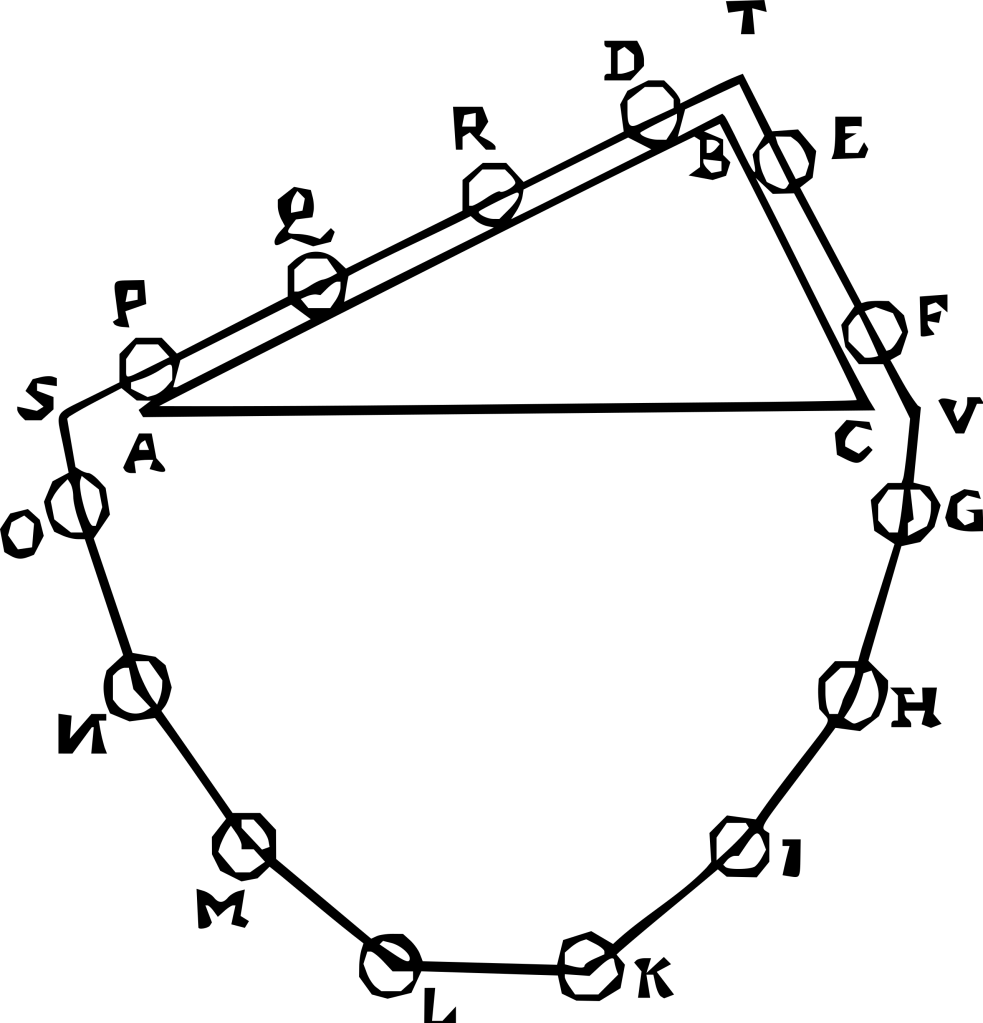
He derived the condition for the balance of forces on inclined planes using a diagram with a “wreath” containing evenly spaced round masses resting on the planes of a triangular prism (see the illustration on the side). He concluded that the weights required were proportional to the lengths of the sides on which they rested assuming the third side was horizontal and that the effect of a weight was reduced in a similar manner. It’s implicit that the reduction factor is the height of the triangle divided by the side (the sine of the angle of the side with respect to the horizontal). The proof diagram of this concept is known as the “Epitaph of Stevinus”. Wikipedia
From this Stevin derives the parallelogram of forces well before its existence is acknowledge by the mathematician.
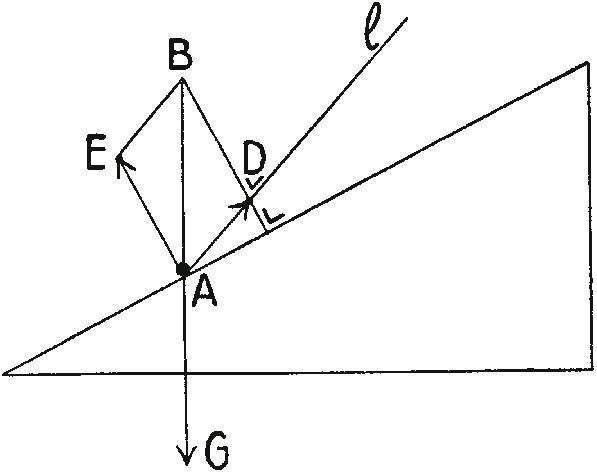
Although Stevin insisted on writing and publishing in Dutch, his work was translated into Latin by Willebrord Snell (1580–1626) and was well known to the French natural philosophers of the middle of the seventeenth century, who went on to develop the science of mechanics
The work on statics of the Urbino School was well known, widely read and highly influential. In particular dal Monte was Galileo’s first patron and his work influenced the young natural philosopher. In c. 1600 Galileo wrote a manuscript Le manchaniche, which was heavily influenced by dal Monte’s work, but which was first published posthumously. Guidobaldo dal Monte only dealt with statics, keeping it separate from dynamics. Galileo brought statics and dynamics together as mechanics in his Discorsi e dimostrazioni matematiche intorno a due nuove scienze (Discourses and Mathematical Demonstrations Relating to Two New Sciences), published in 1638, combining the previous works of others with his own experiments and discoveries, opening acknowledging dal Monte’s influence.
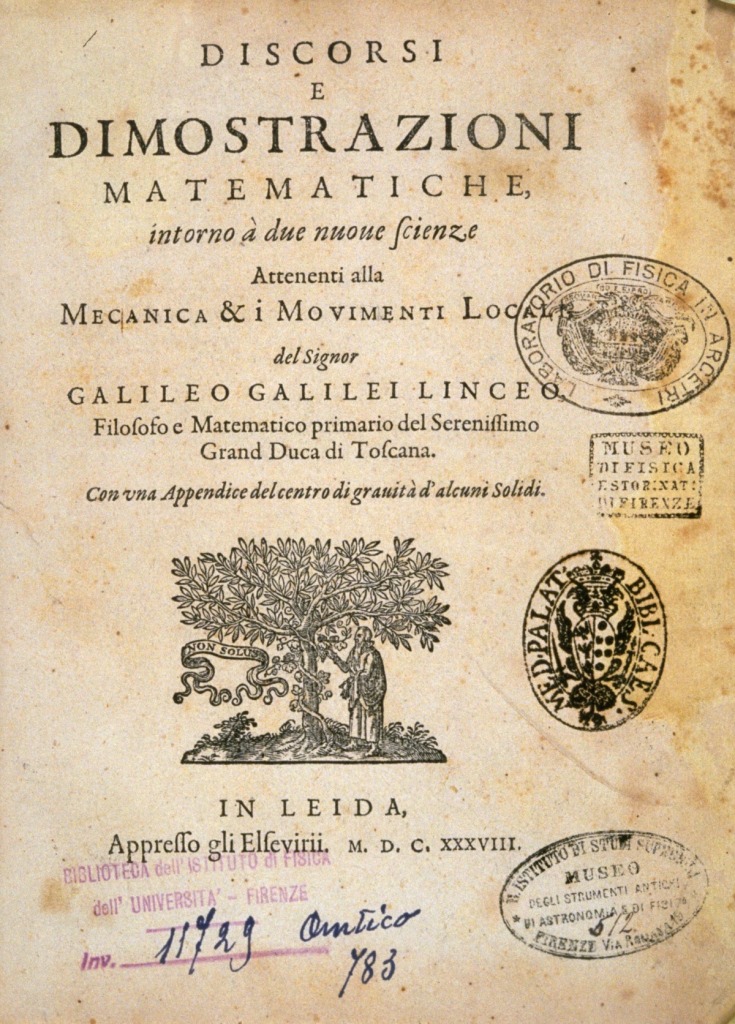
Galileo’s Discorsi was, together with other works such as those of Stevin and Beeckman, one of the foundation stones of modern mechanics.